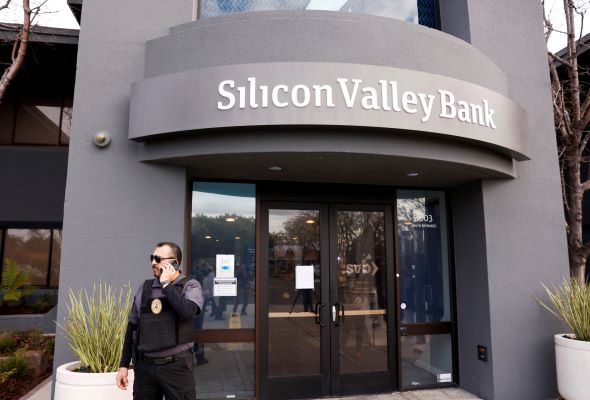
Published in AstroAwani, image by AstroAwani.
In EMIR Research article, “Capital gains tax [CGT] as a strategic fiscal policy lever” (March 16, 2023), it’s argued there – and elsewhere previously – that the measure is a useful instrument to discipline the market (including regulating intra-day capital flow to smoothen out the volatility in what can result in a self-fulfilling cycle, i.e., the “doom loop” but obviously not financial crises) as well as provide an anchor to our currency.
It’s to be added that CGT on listed shares will have negligible or no impact on individual bumiputera shareholders because of the recommended threshold (to be determined) and, concomitantly, the fact that they’re now subsumed under the public shareholding spread (i.e., 50% or 12.5% of the minimum 25% mandatory allocation).
CGT is, in short, simply a potent regulatory tool which can curb the excesses of the market whilst providing a source of revenue for the State as part of its redistribution agenda and that is “non-inflationary” too.
Now, of course, CGT wouldn’t have prevented/pre-empted financial turmoil in the form of the most recent episode embodied by the Silicon Valley Bank (SVB) debacle.
It’s only a part in the larger scheme of things and, by extension, a doom loop which is a contagion and on an extraordinary scale, which could be subsumed under what Hyman Minsky called “Financial Instability Hypothesis”/FIH (see, “The Silicon Valley Bank Collapse and The Business Cycle”, Carmelo Ferlito, Business Today, March 15, 2023”).
The FIH is typically known for highlighting scenarios like the Great Financial Crisis (2008/08) whereby high-octane/high-risk speculative bets that were placed on financial product such mortgage-based securities (MBS) via the credit default swaps (CDS) of the collateralised debt obligations (CDOs) finally “exploded” due to the unsustainability of the subprime nature of the mortgages in the first place.
But it could still very well apply here under the broader framework of the business cycle as well as policy-induced nature of debt deflation, especially the latter.
Under the overarching genus of debt deflation lies the three components of FIH set against the context-specific policy conditions/milieu of lax regulation (see, EMIR Research article where the FIH was also mentioned, “Affordable housing as key to sustained fiscal consolidation, December 15, 2020) resulting in restrictive monetary policy – namely the 1) hedge; 2) speculative; and 3) Ponzi phases.
In turn, these three components are essentially balance sheet configurations.
Now, they’re now applied to the current situation of SVB (and modified for the purpose) as follows:
- Hedge – period of relative calm/stability when interest rates are low and accompanied by lax regulatory environment (simultaneously or sequentially)
This is where SVB became a banking magnet for start-ups and venture capitalists (VCs) depositing their proceeds from initial public offerings (IPOs) and capital gains where very low returns were more than enough offset by the high returns in terms of profits.
SVB was one of the banks which lobbied for de-regulation (Dodd-Franks Act passed in the aftermath of the Great Financial Crisis, 2008/09) and loosening of the capital adequacy ratio and exemption from stress tests and enhanced supervision (whilst the prior Glass-Steagall Act passed in the aftermath of the Great Depression/1929 which sought to separate investment and retail or universal banking was never reinstated).
The pandemic saw SVB’s deposit base soar. According to Bloomberg, SVB’s deposits increased from USD62 billion in March 2020 to USD124 billion in March 2021 (benefiting from the impact of the COVID-19 pandemic on science and technology).
At the same time, SVB became a leading source of loans for the tech industry (concentration risk), especially for venture debt (VD) as an alternative to venture capital (VC). In return, the equity/shares of borrower tech companies are pledged to SVB.
But when interest rates started to increase, its ability to lend became eroded as tech sector is shying away from big investment decisions (“The one that broke the camel’s back”, Pankaj C Kumar, The Star, March 18, 2023).
In addition to higher borrowing costs, a combination of lower risk appetite, weakening business confidence and slowing sales have led the tech sector to deposit less and withdraw their deposits for operating capital (“Fears of new global banking crisis: Have we forgotten the lessons?”, Lee Heng Guie, Focus Malaysia, March 19, 2023).
- Speculative – beginning of the period of disruption as yields starts increasing
As warned in EMIR Research article, “Monetary policy need not be tied to interest rate manipulation (February 17, 2022), “[b]anks will be hard-pressed to off-load the bonds at the secondary markets because they’ll be selling at a loss (recall that the yield is inversely proportional to the principal)” due to a significant increase in the interest rate “‘transmission’ implications in terms of market liquidity”.
And also mentioned in another EMIR Research article, “Sustainable structural reforms the way forward” (August 8, 2022), we had call for the OPR to be progressively lowered to allow foreign buyers to short-selling and, therefore, hedge against the interest rate and simultaneously promote “… market liquidity through Bank Negara’s Iscap (Institutional Securities Custodian Programme) where captive (bond) holdings (in the form of unrealised or accounting loss) such as the impact of lower bond price (and correspondingly rising yields) on bank’s FVOCI (fair value through other comprehensive income) securities can be avoided.
SVB had 55% of its deposits tied up in fixed-income securities/bonds – USD117 billion out of USD211 billion in assets.
A 2-point percentage gain in a 30-year bond’s yield can cause its market value to plunge by around 32% (“Why the failures of SVB and Signature were such outliers – and why the banking crisis is far from over, former central banker says”, Fortune, March 14, 2023).
Now here we can see parallels with the GFC.
SVB made the wrong bet – that mortgages via the federal funds rate wouldn’t rise and hence didn’t hedge its acquisition of long-dated government bonds.
In other words, SVB failed at interest rate risk (see, “How SVB Was Doomed By a Bad Bet on Mortgage Securities and the Fed’s Rate Hikes”, Barron’s, March 11, 2023).
- Ponzi – period of heightened disruption as measured by persistent/ aggressive rate hikes
“[The] bonds were showing big losses at the end of 2022, with some USD91 billion of the bond portfolio, classified as “held-to-maturity” [HTM] securities for accounting purposes, worth just USD76 billion”.
This was when Powell had increased the fed funds rate by seven times already – from 0.25% to 0.50% in March 2022 to 4.25% to 4.50% in December 2022.
On February 1, 2023, the Federal Reserve raised another 0.25% bring the rate up to 4.50% to 4.75%.
The critical part which resulted in the fiasco finally coming to light was that “[t]he loss on [the HTM securities] would have wiped out nearly all of the bank’s USD16 billion equity capital base at year-end 2022”.
Hence, the bond devaluation led to share devaluation and the bank run – and the sale of these HTM securities at a loss.
There’re parallels with liability-driven investments (LDIs) debacle in the UK under the Truss-Kwarteng macroeconomic regime. LDIs were high-risk investments to complement and supplement existing assets held by pension funds and meant to ensure sufficient funds for withdrawal come retirement period (meeting future liabilities by matching it with the assets held).
But there’s a catch. LDI’s were essentially hedged investments in the form of interest rate swaps.
What then happened was that the “unfunded/uncosted” tax cuts (which were giveaways for the rich and top earners) would have compounded the supply-side inflationary pressure (caused by energy wholesale price spikes) set against the policy condition/backdrop of the Bank of England (BOE)’s aggressive bank rate hiking.
Bond yields soared following the announcement of the Truss-Kwarteng mini-budget (that included abolition of the 45p higher rate income tax). This was when pension funds had only hours to liquidate its holdings to top up its part of the swap contract with the hedge funds. This in turn fed the doom loop – in the form of the frenzy of selling off long-dated gilts (bonds) – feeding into the yield spikes.
At the same time, the then Chancellor of the Exchequer’s former hedge fund boss at BlackRock engaged in short-selling the GBP – “betting” on the currency’s devaluation (exchanging the GBP for USD and later then buying back the former cheaply).
The “market” was wary that the double-whammy/twin-pincer of inflationary pressure would have implications for the GBP since the current account deficit would widened – further exacerbating the cost of living pressure (evoking the spectre of Sri Lanka).
Heteredox economists L Randall Wray and Yeva Nersisyan in “The collapse of SVB shows why monetary policy is the wrong tool to fight inflation” (The Hill, March 17, 2023) have argued that: “Rather than change interest rates to control inflation, it should pivot to a policy of stable interest rates with the goal of maintaining financial stability. The current experience is yet another stark example that unstable interest rates are inconsistent with financial stability. This approach is counterproductive and unnecessary since we have more effective tools for macroeconomic stabilization, such as fiscal policy”.
EMIR Research supports such a call as we too had call for the mandate of the Monetary Policy Committee (MPC) to “towards achieving interest rate stability” whilst also calling for “… a type of an asset swap programme (i.e., special kind of qualitative easing/QLE) whereby Bank Negara will exchange higher yielding (“BNMN 2.0”) for lower yielding MGS bonds from the commercial banks”.
This under the context of targeted or dual-interest rate regime – which (theoretically) can also be applied to distressed assets (“A dual-interest rate regime – as part of an overall targeted subsidy system”, December 7, 2022 – where we also highlighted the maturity mismatch in the form of the Savings and Loans/S&L Crisis under Volcker which is precisely being replayed today under Powell).
Incidentally, the Federal Reserve’s “Bank Term Funding Program”, SVB (and other affected banks) can pledge these assets as collateral which are then valued at par (i.e., according to their original price) – a form of a bailout (indirect) to the uninsured depositors whereby under existing Federal Deposit Insurance Corporation (FDIC), only deposits up to USD250,000 are guaranteed (insured).
This leads to one inescapable conclusion (in the context of where direct fiscal injection/deficit spending together with privately created loans create deposits).
Commercial banks, regardless of whether they create credit ex nihilo/out of nothing (which is now the main practice) or lend out depositors’ funds, are engaged in indirect fiscal injection/deficit spending into the economy on behalf of the State – whereby both the treasury and central bank are part of the consolidated public sector.
A complete separation of roles and functions between the fiscal and monetary policy makers is, therefore, impossible/illusory.
“Banks exercise delegated power – a bank charter is an outsourcing arrangement, a franchise, to issue money on behalf of the government” (“After Silicon Valley Bank, scrap the deposit insurance cap limit”, Lev Menand and Morgan Ricks, Washington Post, March 15, 2023).
The root cause of SVB’s problem is grounded in central banking not learning from past history set against a dominant macroeconomic paradigm that’s failed time and again.
In short, monetary policy can’t be the dominant/leading actor – it must serve fiscal policy (and not the other way around).
Jason Loh Seong Wei is Head of Social, Law & Human Rights at EMIR Research, an independent think tank focussed on strategic policy recommendations based on rigorous research

